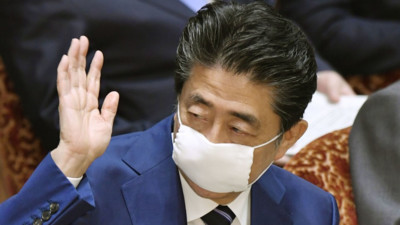News
Prime Minister Abe Declares State of Emergency in Japan (Updated)
posted on by Rafael Antonio Pineda
Update: Japanese Prime Minister Shinzo Abe announced a state of emergency for Tokyo, Osaka, Kanagawa, Saitama, Chiba, Hyogo, and Fukuoka on Tuesday evening. The state of emergency will last until May 6. Source: NHK
 The Kyodo News agency reported on Monday that Japanese Prime Minister Shinzo Abe intends to declare a state of emergency due to the outbreak of the new coronavirus disease (COVID-19) in the country. Abe will need to consult an advisory panel made up of public health and medical experts to determine the necessity of a state of emergency.
The Kyodo News agency reported on Monday that Japanese Prime Minister Shinzo Abe intends to declare a state of emergency due to the outbreak of the new coronavirus disease (COVID-19) in the country. Abe will need to consult an advisory panel made up of public health and medical experts to determine the necessity of a state of emergency.
The declaration would primarily target Tokyo, Osaka, and other metropolitan areas in Japan, empowering prefectural governments to instruct people to only go out to purchase supplies, and allowing local governments to direct the closure of schools and businesses. The local governments could also restrict the use of facilities that accommodate large groups of people, such as stadiums and theaters. Under the current policies, Japan's governmental bodies can only advise companies and organizations to voluntarily agree to self-restraint.
Under a state of emergency, prefectural governments would, under certain circumstances, be able to expropriate some private property and facilities to set up emergency hospitals, requisition necessary provisions and medical supplies from those who refuse to sell them, and enlist the private sector's help in transporting emergency supplies.
Tokyo reported 143 new infections from COVID-19 on Sunday — marking another day of record high increases, and bringing the number of total infections in Tokyo to 1,033. Health officials are particularly concerned that 64% of the new cases on Sunday, or 92 cases, had no clear infection routes. Knowing the infection routes is key to Japan's anti-COVID-19 policy until now. The country's efforts hinge on identifying and isolating clusters of infections as they crop up.
The metropolitan government previously asked high schools to remain closed until early May, and asked local education boards to consider the same for elementary and junior high schools, but did so with no current legal way to compel these entities to comply.
The first reported cases of COVID-19 were in Wuhan, China in December, and then the disease began to spread in varying rates and intensities across many parts of the globe through incubation in human hosts. The World Health Organization (WHO) declared a world health emergency on January 30, and announced on March 11 that it is classifying the outbreak as a pandemic. As of Sunday, the WHO reported that there are 1,133,758 infected individuals worldwide. 62,784 individuals have died from the disease.
As of Sunday, the WHO reported that Japan has 3,271 cases of COVID-19 with 70 deaths. These numbers do not include the number of cases from the Diamond Princess cruise ship docked in Yokohama. That cruise ship had 712 infected passengers with seven deaths.
The Japanese government is working to restrict travel to the country from many territories around the world.
Source: Kyodo News
this article has been modified since it was originally posted; see change history